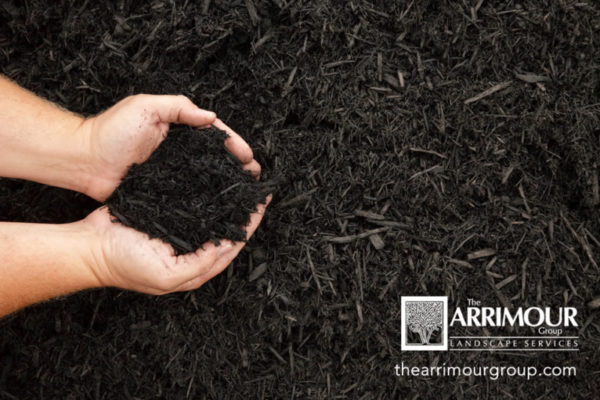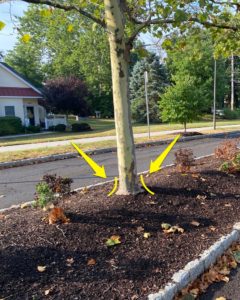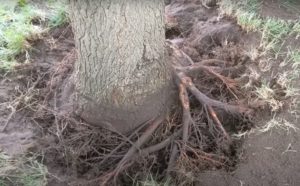

With the recent warmer temperatures in our area, it feels like spring is almost here. In the landscape world, that means mulch! Mulch is an essential component of any successful landscape maintenance program and can provide a range of benefits to increase the overall health of your property. From improving soil health and reducing the need for excessive irrigation, to controlling weeds and helping to insulate plants from extreme temperatures, mulching is a critical service in the commercial landscape setting. However, while it is important to use enough mulch to reap all these benefits, it is possible to overdo it.
When adding too much mulch consistently each spring, the organic matter beneath does not have enough time to breakdown, leading to over-mulching. This can lead to disease & pest issues, inner bark death and girdling root among other problems. However, there are proven practices to correct these problems that an experienced landscape contractor can perform.
Disease & Pests
One of the benefits of mulching is its ability to retain moisture for the plant material that it encompasses. However, when an area is over-mulched that moisture can turn into more of a soggy wetness that creates the perfect environment for fungal and bacterial diseases to thrive. Once established, these pathogens and penetrate the plant or tree and can kill it overtime by preventing the uptake of nutrients it needs to survive. This can also make the tree extremely more susceptible to pests like beetles and borers that stress the plant even more, increasing the rate of decline.
How to Correct: The first step is to inspect and mark out the areas that are deemed to have too much mulch, then perform a mulch reduction. Raking the areas out and removing the excessive mulch will promote a better environment for the plants moving forward. You will also need to work with your landscape contractor in implementing an ongoing Integrated Pest Management (IPM) program to address any pest or disease activity.
Inner Bark Death

Figure 1A: Properly planted tree with root flare exposed just above soil surface
When excessive mulching occurs around the base of trees, the root collar of the tree can be compromised. The root collar is the very bottom portion of the main trunk of the tree where it fans out slightly (see Figure 1A). When a tree is over-mulched (or improperly planted), the root collar becomes buried and the inner bark tissues can begin to decay from the amount of moisture in the area. As this decay progresses and kills the inner bark, it leads to a weakened and malnourished root system that can kill the tree.
How to Correct: Excessive mulch around the immediate base of a tree can be tricky since there will most likely be roots ranging in size near the surface, making it hard to simply perform a mulch reduction by hand. When this happens, a pneumatic air spading can be performed to blow out the mulch and soil to expose the root collar and prevent any further damage to the root system. It also helps loosen any compacted soil around the tree to promote healthy root growth. Once performed, it is important to maintain a mulch-free buffer 3-6” around the tree, depending on maturity.
Girdling Root
Girdling root occurs in trees when something is wrapped tightly around the main trunk of the tree. It circles or partially circles the base of the tree near the soil surface (see Figure 1B), choking off the flow of water and nutrients between roots and branches This could be caused from a wire basket or container that was not removed when the tree was planted, or most often when the tree is planted too low or is over-mulched, covering the root collar of the tree. Symptoms of girdling root include: excessive twig dieback, large dying branch leaders throughout the tree, thinning crown of the tree and leaning of tree among other problems.

Figure 1B: Exposed girdling root after air spading was performed around root collar.
How to Correct: Similar to correcting inner bark death, an air spading can be performed to loosen soil/mulch and expose the girdling root. Once exposed, a root pruning can be performed to make strategic cuts to prevent the problem from getting worse. This is a great time to identify other roots that show signs of potential girdling and prune them as well. It is important to note that root pruning should only be performed by an experienced landscape contractor or arborist; any wrong cuts can potentially harm the tree.
Conclusion
Mulch is almost synonymous with spring and for good reason. It brings a fresh look to any property and when done right, can benefit the plant material it surrounds. However, it is crucial that proper maintenance practices are being followed to determine the amount of mulch needed (if any) in each area, each year.
